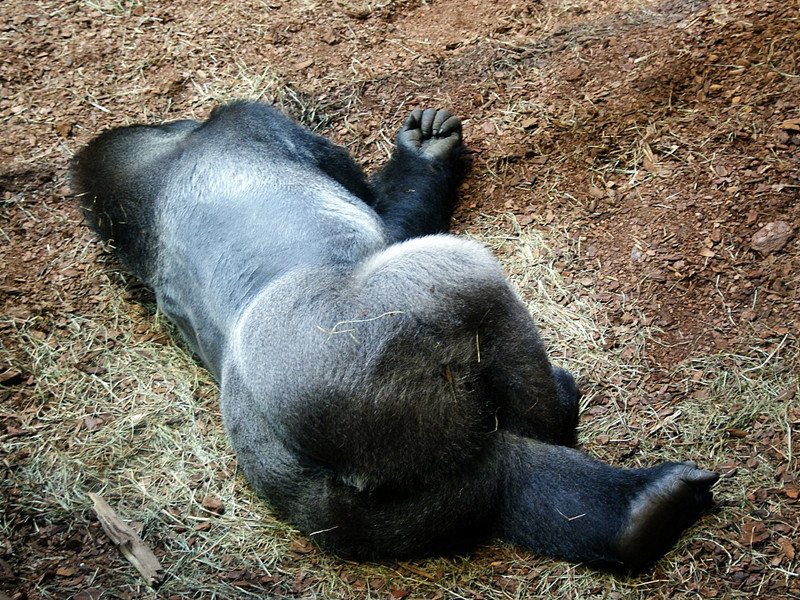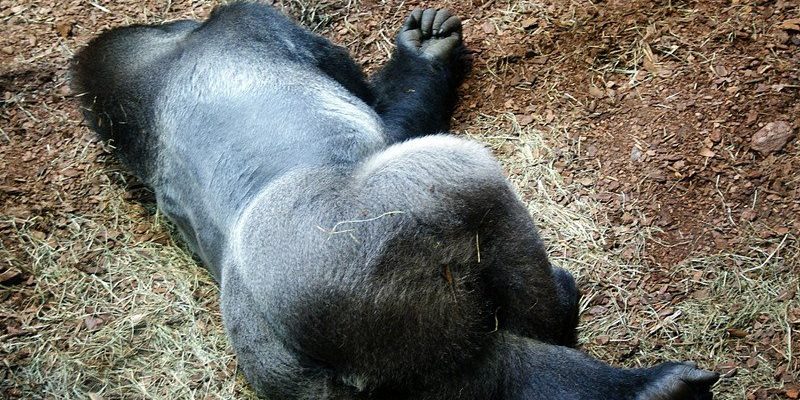
Imagine sitting around a campfire, chatting about how these magnificent animals find food and interact with their environment. It’s a bit of a puzzle, really. On one hand, they primarily eat plants and fruits, showcasing their herbivorous nature. But there are layers to how they forage and interact with their world. So, grab a warm beverage, and let’s dive into the complex and fascinating diet and hunting strategies of the gorilla!
Understanding Gorilla Diets
Gorillas are primarily herbivores, which means they predominantly consume plant matter. Here’s the thing: their diet is not just a simple salad. Gorillas have a diverse menu that includes leaves, stems, fruits, and flowers. In fact, they can eat over 100 different plant species! Their favorite foods often vary depending on the season and the specific area they inhabit.
In the dense rainforests of Central Africa, where many gorillas live, they munch on leaves from trees like wild celery and bamboo shoots. You might be wondering how they decide what to eat. Well, gorillas have a good sense of what’s nutritious. They often choose foods that are young and tender, as these are usually packed with essential nutrients. Their strong teeth and jaws, built for grinding, help them tackle even the toughest vegetation.
Another facet of their diet is the fruit. Gorillas love ripe fruits like bananas and figs. They often forage in groups, searching for the ripest and juiciest offerings. Think about it like a family picnic; everyone shares the bounty, making it a social event. That’s right! Their foraging isn’t just about eating—it’s a way to bond and strengthen group dynamics.
Feeding Habits of Gorillas
You might find it interesting that gorillas spend a significant portion of their day eating. On average, they can chew through about 40 pounds of food daily! This hefty intake is necessary to support their massive size and energy needs. With such a rigorous feeding schedule, they are known to be quite meticulous about their food choices.
Gorillas use their strong arms to pull branches down and reach fruits that are otherwise out of reach. They’re clever! Their dexterity allows them to navigate through their environment effectively. And while they may seem slow and lumbering, gorillas can actually be quite agile, especially when it comes to climbing trees in search of yummy snacks.
Interestingly, gorillas also have an ecological impact on their environment. Their feeding habits help disperse seeds throughout the forest. When they eat fruit and travel, they leave behind those seeds in their droppings, promoting the growth of new plants. It’s like they’re nature’s gardeners, helping to maintain the delicate balance of their ecosystem!
Gorillas and Social Feeding Behavior
Gorillas are social animals, and their feeding behavior is often influenced by the group dynamics within their troop. When foraging, you’ll usually find them eating together, sharing food and keeping an eye out for each other. This social aspect is crucial not just for bonding, but also for safety.
When one gorilla finds a good fruit tree or a patch of tasty leaves, others will often follow. It’s a bit like following a friend who knows the best restaurant in town! This behavior not only strengthens social relationships but also ensures that everyone in the troop has access to food.
Moreover, young gorillas learn valuable skills by watching older members of the troop. They pick up tips on what to eat, how to find it, and even how to avoid potential dangers while foraging. It’s a wonderful example of learning through observation, which is essential for their survival in the wild.
Hunting Strategies: An Unexpected Twist
You might be surprised to learn that gorillas sometimes engage in hunting behaviors, though not in the traditional sense. While they are primarily herbivores, they have been observed consuming small insects and occasionally small animals like rodents. This is more about opportunistic snacking rather than a dedicated hunting strategy.
Gorillas will sometimes use tools to aid in their foraging. For instance, they might use sticks to poke into tree hollows and coax out insects. Think of it as a primitive but effective tool-use that showcases their intelligence. In this way, gorillas demonstrate problem-solving skills that are quite remarkable for non-human animals.
It’s also fascinating to note that different gorilla groups may have unique hunting styles. Some may focus more on insects and small critters, while others may rarely hunt at all. This flexibility in behavior shows how adaptable gorillas can be in their quest for food.
The Role of Seasonality in Diet
Seasonal changes significantly impact the gorilla’s diet. Different times of the year bring varying food availability. During the rainy season, gorillas might find an abundance of fruits and new leaves, while the dry season can limit their options. It’s crucial for them to adapt to these changes.
In the wet season, gorillas thrive on ripe fruits and lush foliage. However, as the seasons shift and some resources dwindle, they may have to get creative, shifting to tougher leaves and bark. This adaptability is vital for their survival, showcasing their resilience in the face of environmental changes.
Additionally, the season can influence social behaviors too. When food is plentiful, gorillas may spend more time socializing and engaging in playful interactions. Conversely, during leaner times, they might be more focused on foraging and less on social activities. It’s a fascinating cycle of survival that highlights the interplay between food availability and social dynamics.
Conservation and Diet: A Fragile Balance
Unfortunately, gorillas face significant threats due to habitat destruction and poaching, which directly impacts their diets and hunting strategies. As forests are cleared for agriculture or urban development, gorillas lose access to their natural food sources. This loss can lead to malnutrition and decreased survival rates.
Conservation efforts are crucial to protect their habitats and ensure that gorillas can continue to thrive. Organizations worldwide work tirelessly to create protected areas, promote sustainable practices, and educate local communities. It’s a challenging battle, but every bit of effort counts to preserve these incredible animals and their ecosystems.
Moreover, raising awareness about the importance of gorillas can encourage more people to support conservation efforts. After all, every time we learn about gorillas’ diets and hunting strategies, we also learn about the fragile balance of nature. By protecting gorillas, we are also helping maintain the health of our planet.
Gorillas are more than just gentle giants; they are complex creatures with rich social lives and unique feeding habits. Their diet is primarily herbivorous, filled with a variety of plants, fruits, and occasionally insects. Their social feeding behaviors enhance their bonds and promote learning among troop members. While they may not hunt in the traditional sense, they have cunning strategies that make them adaptable in their quest for food.
As we learn more about these magnificent animals, it’s crucial to remember the challenges they face. Conserving their habitats and understanding their diets can go hand in hand in ensuring their survival for generations to come. So the next time you think of gorillas, remember their intricacies, their struggles, and the beauty of their place within our world. It’s a reminder that every part of the ecosystem is connected—just like the gorillas themselves, forging bonds over meals and shared experiences.

